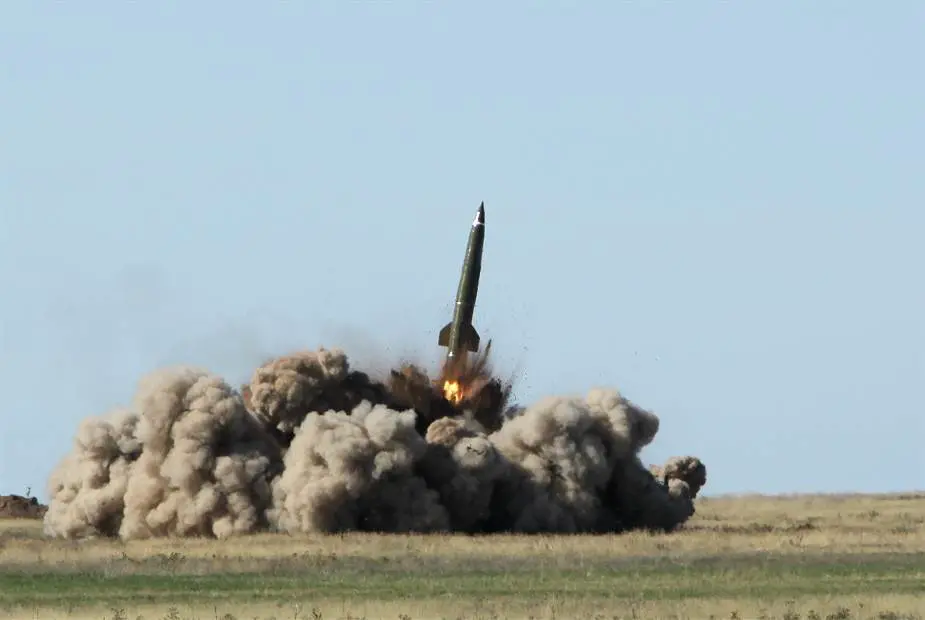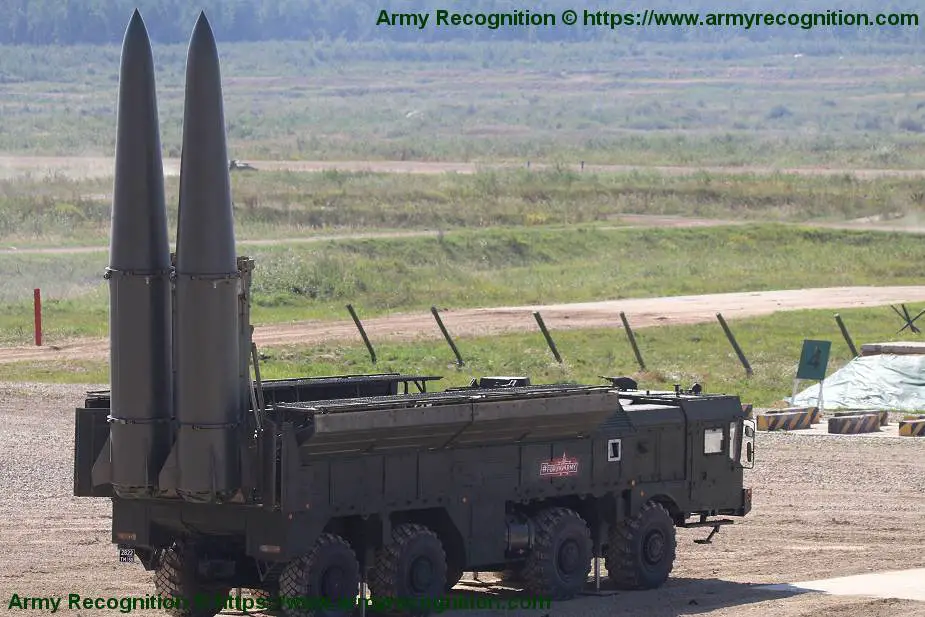Russia plans to use Iskander SS-26 Stone ballistic missile for coastal defense
According to information published by Russian Press Agency TASS on August 7, 2020, Russian Iskander NATO code-named SS-26 Stone short-range tactical missiles will be used for coastal defense. From 2020 missile brigades of the ground forces will train to destroy amphibious assault. Experts believe Iskander will complicate amphibious assault on the Russian territory and increase the strike potential of the Navy, the Izvestia daily writes.
Follow Army Recognition on Google News at this link

Live firing of Russian army Iskander short-range ballistic missile. (Picture source Yandex Russia)
Missile brigades will train strikes at amphibious assault and warships, Defense Ministry sources said. It will take minutes for Iskander to detect and destroy a target. It will become a standard combat training element in the future. Previously, such targets were not typical for the missiles.
Adversary coordinates will be transmitted in real-time by automatic controls and from superior headquarters. The missiles with a range of 500 km will support Russian marine assault and obtain guidance from aviation, warships, and drones.
Iskander for the first time trained such fire at a recent snap check. The Defense Ministry said the weapons in Krasnodar region e-launched missiles at coastal targets during a tactical exercise. The missile men trained to prevent the seizure of the Black Sea coast. Iskander conditionally destroyed hardware accumulations at the moment of disembarkation from amphibious assault ships.
In November 2019, the Defense Ministry announced that the rearmament of all missile brigades with Iskander had been completed. They replaced Tochka-U which was sent for storage. Media reports said ten missile brigades were rearmed with Iskander in 2010-2019 and three new ones were created. Two brigade sets of Iskander have been annually produced of late.
The Iskander (Western reporting name SS-26 Stone) short-range ballistic missile is a successor to the Oka (SS-23 Spider), which was eliminated under the Intermediate-Range Nuclear Forces (INF) treaty. The Iskander-M missile system was officially adopted by the Russian Army in 2006.
The Iskander-M has a range of 400-500 km and uses both inertial and optical guidance systems to achieve an accuracy of 10-30 m CEP (Circular Error Probable). It can carry conventional and nuclear warheads up to 700 kg and employs a maneuverable re-entry vehicle (MaRV) and decoys to defeat theater missile defense systems.
The missile is carried by a Transporter Erector Launcher (TEL) vehicle based on an 8×8 MZKT-79306 military truck chassis.

Russian-army Iskander-M short-range ballistic missile TEL Transporter Erector launcher vehicle; (Picture source Army Recognition)
For Iskander to effectively fight sea targets, it is necessary to ensure data transmission from the Navy to the Ground forces, expert Vladislav Shurygin said. “It will be possible to increase the number of missiles fired at a target, as coastal weapons and ground forces will fight the adversary as well. Each army has Iskander formations and their engagement in coastal defense will produce a powerful fist. The more sea targets the missiles hit, the fewer forces they will have to destroy on the coast. It is easier to sink a warship than to fight a landed assault,” he said.
At present, artillery and coastal missiles of the Navy are in charge of coastal defense. Iskander exceeds them by the range and does not cede in precision.
The modern strategy calls for over-the-horizon amphibious assault of several dozen kilometers from the coast. Marines land from speedboats and helicopters. The warship and its escort remain outside the zone of artillery fire but are vulnerable to missiles.
Iskander fires two types of missiles. The air ballistic ones ascend to higher altitudes and can maneuver in the trajectory to complicate interception by air defense. Cruise missiles fly at extremely low altitudes and can change the route to bypass the air defense. The range of both missiles is 500 km.
Experts believe the combination of two missiles makes Iskander strikes deadly for ground-based air and missile defense. Guidance is provided by an inertial navigational system and GLONASS satellites. The missile can be re-directed in flight to attack moving targets, such as warships.
Hit precision ensures the destruction of the site and small targets. They include adversary tactical launchers, multiple launch rocket systems, long-range artillery, airplanes and helicopters at airfields, command posts and communication hubs, the Izvestia said.




























